Two Years of Trauma
Written by Noelle Toumey Reetz
The COVID-19 pandemic has been the most traumatic collective event of our lifetime. And after two excruciating years and more than a million deaths in the U.S. alone, it is still unclear when, or if, the pandemic will end. That uncertainty is one of many stressors, along with worries about health, family, work and finances, that have taken a significant toll on mental health.
In a recent survey, the American Psychological Association found that nearly two-thirds of respondents said their lives have been permanently changed by the pandemic. The report also showed that a large proportion of the country has been living in “sustained survival mode” with significant consequences for mental health. The World Health Organization says the pandemic has sparked a 25 percent increase in anxiety and depression worldwide.
“I think the mental health issue is percolating, just like a virus incubating,” says Laura Shannonhouse, associate professor of counseling and psychological services in the College of Education & Human Development. “We’re seeing little pieces now, but it’s like an iceberg. Most of it is still below the surface.”
Shannonhouse is one of several researchers at Georgia State University who have been studying how individuals are dealing with the stress of the pandemic. While they agree the mental health crisis is just beginning, they’re also seeing signs of hope and resilience.
Trauma on a Mass Scale
For most people who have survived the pandemic, this time will leave a mark. There may always be a line of delineation — before and after. However, says Jeff Ashby, co-director of Georgia State’s Ken Matheny Center for the Study of Stress, Trauma and Resilience, we still haven’t reached the “after” — and for many, the anxiety of the unknown can be harmful in and of itself.
“When we first began our research, we thought, ‘We must hurry, because of course, this will be over soon…’ and two years later we still don’t know what’s going to happen,” says Ashby, a professor in the Department of Counseling and Psychological Services. “I think that’s the hard part. It’s still a moving target.”

Ashby and his colleagues, including center co-director Ken Rice, recently surveyed 745 people to examine whether the strain of the pandemic could lead to stress disorders, and if so, which groups are most at risk. The results, which were published in published the Journal of Community Psychology, showed the pandemic is an independent source of traumatic stress and, for a subset of people, that stress can predict the development of post-traumatic stress disorder (PTSD).
The research determined the association between COVID traumatic stress and PTSD is stronger among individuals who have cumulative trauma. In other words, if you’ve already dealt with loss and trauma in the past, there’s an increased risk that the pandemic was harder for you.
“People have what’s known as a ‘trauma load,’ and part of what you’re doing is reactivating traumatic experiences from previous situations,” says Ashby. “So that would suggest that in higher-risk populations, the experience of fresh trauma would be more acute.”
Ashby and Rice also looked at how the pandemic affected individuals’ mental health based on race/ethnicity. They were surprised by what they found.
“We know that certain minority groups were hit harder, both in terms of infections and deaths,” Ashby says. “We expected to see similar impacts on mental health, yet we did not find it.”
Instead, researchers found an association between increased PTSD symptoms and high levels of cumulative trauma for all groups, except for Asian Americans. For this group, the relationship between COVID, traumatic stress and PTSD symptoms did not appear to be affected by previous trauma.
Why were the results conspicuously different for Asian Americans? The researchers note that previous surveys have found Asian Americans are less likely to report psychological distress compared to other groups. Additionally, the research was conducted amid a backdrop of increased discrimination and violence against Asian Americans during the pandemic. Asian Americans who have a greater history of previous trauma may be more affected by being scapegoated as the source of COVID‐19 in the U.S., and as a result, COVID‐19 specific trauma (for example, a personal fear of infection) may have a comparatively diminished effect on PTSD symptoms.
Ashby says the results emphasize the importance of examining subgroups for potential exacerbating — or protective — effects of COVID stress on mental health outcomes. He adds that future research should examine other factors, such as how socioeconomic status has affected how people coped during the pandemic.
“We know that resources help buffer traumatic or stressful experiences,” he says. “There are those of us for whom the largest imposition was a kind of social isolation, while others were riding public transit to get to work that was mandatory for their livelihood.”
Because the pandemic has affected millions — even billions — of people around the world, Ashby predicts a skyrocketing need for mental health services in the coming years.
“Given the widespread effect of COVID-19 related stress and its far-reaching impact, there will likely be an increased need for mental health services that exceeds our current capacity to meet those needs,” says Ashby.”
For Front-Line Workers, Emotional Exhaustion
It’s been approximately 750 days since life ground to a standstill in the U.S. Those who had the option to work from home left their offices in March 2020 — with their plants healthy and their coffee cups half-full — and many didn’t return for months or more. Millions of others lost jobs or kept commuting as essential workers.
Perhaps the greatest psychological burden, however, has been borne by those in what’s known as the “helping professions.” Caregivers, including social workers and healthcare professionals, can be traumatized by their work through what’s known as “secondary traumatic stress.” The pandemic has dramatically increased the trauma exposure for these individuals, putting them under extraordinary levels of strain.
Brian Bride is a Distinguished University Professor and former director of the School of Social Work in the Andrew Young School of Policy Studies. In 1995, he developed the internationally recognized Secondary Traumatic Stress Scale, designed to measure these reactions of helping professionals who have experienced traumatic stress through their work.

“Medical personnel have had to respond to a large number of patients, many of whom have died. At the same time, they’ve been worried about getting sick themselves,” he says. “Many of them have also had to deal with moral distress about rationing PPE or even rationing care. Even if they haven’t had to make those hard choices, they‘ve likely had to worry about it. That causes people to second-guess who they are morally in the work that they’re doing.”
In addition to secondary traumatic stress, says Bride, there’s the issue of shared trauma, which occurs when a professional has directly experienced the same collective trauma as their patients. There were many reports of shared trauma after the attacks of September 11, 2001, and it can trigger nightmares, depression, hyperarousal and even PTSD in extreme cases.
“When the notion of PTSD first emerged, it was thought to occur only if the person directly witnessed the trauma. But our research shows that’s not necessarily the case,” says Bride. “This notion of shared trauma primarily comes out of social work and psychology and therapy, but it certainly could apply to healthcare professionals and even teachers.
“We know that the professions at the highest are those in which people work with children who’ve been traumatized, such as child welfare professionals or social workers,” he adds.
Bride is currently working to update the scale to include pandemics as a traumatic event and clarify the impacts to those who have been on the front lines.
“One of the things that’s important to me is setting both individual and organizational guidelines,” says Bride. “For a long time with secondary traumatic stress, the onus has really been on the individual to take care of themselves. We need to recognize that secondary trauma occurs within work settings and organizations have a responsibility to create a culture where the staff and professionals can admit to that and seek help.”
Grieving the Loss of Connection
For many people, the pandemic resulted in an epidemic of loneliness and social isolation. The impacts have been particularly pronounced for older adults, who were already more likely to experience isolation as well as other issues like financial insecurity. In Laura Shannonhouse’s lab (the H.O.P.E. lab, or Helping Others Provide Empathy) researchers are developing programs to help people, especially older adults, who are struggling with depression and thoughts of suicide.

During the pandemic, their work with older home-bound adults has led to the expansion of a suicide-intervention project. Known as “BE WITH” (Belonging and Empathy, With Intentional Targeted Helping), the project is designed to reduce social isolation, loneliness and elevated suicide risk in racially diverse, older adults — the demographic hardest hit by COVID-19. In 2018, Shannonhouse’s team began training home delivery meal providers (think Meals on Wheels) in suicide prevention techniques.
Mary Chase Mize, postdoctoral research associate and assistant director of the H.O.P.E. lab, recently published a study from her dissertation (under the direction of Shannonhouse) in the journal of Educational Gerontology, which found that trained volunteers repeatedly used their new suicide intervention skills. That response is important since these volunteers are often the only social connections for the older adults they serve. When the pandemic made in-person meal delivery a challenge, Shannonhouse and her team used $1.3 million from the Department Health and Human Services to train 160 new suicide interventionists to make warm calls instead. They have cataloged more than 4,000 life-affirming calls and are working to extend this programming beyond the pandemic.
“We know 19 million people, or six percent of the U.S. population, have thoughts of suicide. That’s a huge issue, and yet anyone can do a suicide intervention, anyone can get these skills,” says Shannonhouse.
Her team is halfway through a project designed to code and analyze recorded files, some which include suicide interventions, to identify the types of volunteer behaviors that occurred and which ones made a difference. She notes that their model can also be applied in other crisis situations, such as to prevent self-injury among students.
In honor of this work, Shannonhouse was recently awarded the Garry R. Walz Trailblazer Award from the American Counseling Association, which recognizes individuals whose vision, passion and leadership skills help advance the counseling profession. She says even though her work is centered on suicide first aid, it’s chiefly about fostering hope.
“People want connection; they’re craving it. So much so that the people who are the loneliest and are hurting the most will put suicide on hold at just the hope of getting connection,” she says.
Pey-Shan Wen is an assistant professor of occupational therapy in the Byrdine F. Lewis College of Nursing and Health Professions. When the pandemic hit, she began studying how the pandemic influenced people’s participation in normal activities (like going to church, shopping and attending school or work), and how that in turn impacted their mental health. In her study, which is still ongoing, she surveyed more than 300 adults ages 18 to 89 to compare the participation levels of different age groups and explore factors that could contribute to depression and anxiety.

Wen found that after the initial pandemic lockdown, most young respondents did not change their participation levels, while participation decreased for the majority of older respondents. Yet even though older adults reported the lowest participation during the pandemic, they also reported lower levels of stress and depression compared to middle-aged and young adults. The subjects who fared the best were those aged 45 or older who were married or living with someone.
“That may be because compared to single parents, they had less to juggle,” says Wen. “Yet even among those without children who were over 45, marriage or companionship was protective against depression or anxiety.”
The survey also found that women tended to be more depressed than their male counterparts, and younger people reported higher levels of stress and depression compared to the oldest group. In addition, Wen found higher levels of depression among young people living at home with family members, like parents or grandparents. She plans to present the research this summer at the World Federation of Occupational Therapists Congress meeting in Paris, and the team is continuing to dig into the data to look at how gender and education level shape respondents’ mental health.
“Already our findings have important implications for the rehab profession,” says Wen, “because when you are treating younger participants, it will be important to be mindful of whether they might also need mental health treatment.”
The Consequences for Children
For kids and adolescents, the pandemic, and the disruptions it has produced, have driven a mental health crisis. Suicide attempts have risen among young people under 18, according to the Centers for Disease Control and Prevention, and a study of pediatric insurance claims has revealed a spike in mental health issues in children. In November 2021, the American Academy of Pediatrics, the American Academy of Child and Adolescent Psychiatry and the Children’s Hospital Association went so far as to declare a national state of emergency for child and adolescent mental health.
Psychologist and associate professor Erin Tully is director of the FEELINGS Lab, which seeks to learn why some children become depressed and anxious while others seem protected even in the face of considerable risks. During the pandemic, Tully knew that children may have become especially attuned to their parents’ emotions as they spent more time together at home, and that parents play a critical role in shaping their children’s response to stress. She wanted to learn how children’s feelings of self-blame about causing their parents to worry during the pandemic could affect kids’ own mental health. The resulting research survey, which was presented at the 2021 meeting of the Society for Research in Child Development, found a strong correlation between children’s self-blame for their parents’ worry about illness and children’s mental health problems. But it also found a link between children’s feelings of responsibility for their parents’ happiness and protective factors, like hopefulness.

“Children spending a lot of time with their families may have produced some negatives in terms of increased parenting stress, but also provided an opportunity for parents to spend more quality time with their children, which may have benefits for kids,” says Tully.
The magnitude of the pandemic’s negative and positive effects on children’s mental health may continue to unfold as time goes on, she predicts.
“Especially for younger kids, we may see the effects a bit later. A child who is now three or four experienced important developmental shifts with respect to learning to respond to others during the pandemic,” she says. “Children likely missed a lot of opportunities for interacting with peers. It will be interesting to see what the research reveals as these kids develop.”
Still, the researchers agree that it’s important to consider our amazing human capacity for hope and resilience as we come to terms with the great toll of this destabilizing event.
“These are very serious concerns. But the distress caused by the pandemic is not necessarily a life sentence,” says Ashby. “For many, it will abate. You’re probably familiar with the saying, ‘It’s okay to not be okay.’ I would add that you probably will be okay again soon.”

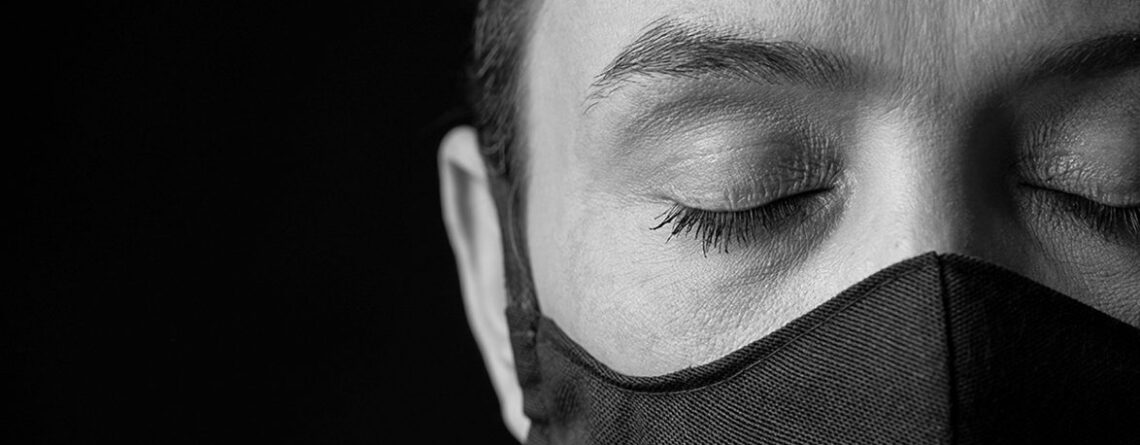

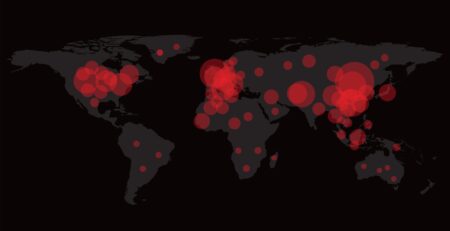



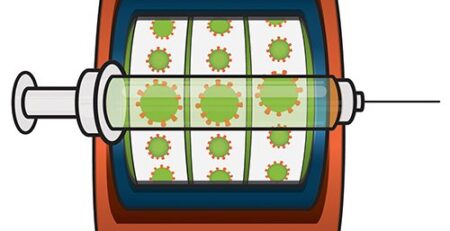


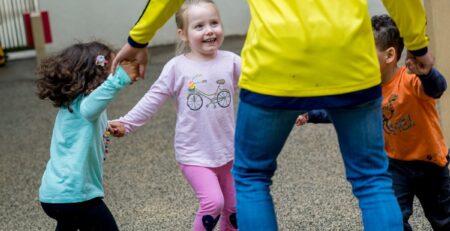
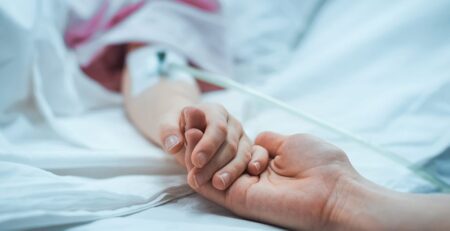
Leave a Reply